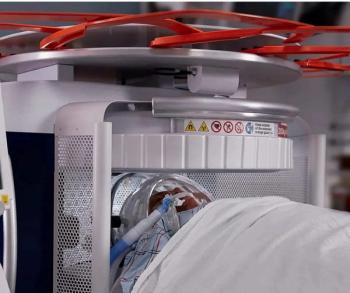
News from NASCI: Researchers solve artifact problem that degrades first-pass MRI at 3T
The assessment of myocardial perfusion reserve at 3T MRI is clinically feasible and is desirable because of its superior signal-to-noise ratio, spatial resolution, and temporal resolution, according to a preliminary study presented at the annual meeting of the North American Society for Cardiac Imaging. Researchers used a nonuniformity correction method to reduce artifacts that degraded the quality of previous first-pass perfusion protocols for 3T cardiac MR.
The assessment of myocardial perfusion reserve at 3T MRI is clinically feasible and is desirable because of its superior signal-to-noise ratio, spatial resolution, and temporal resolution, according to a preliminary study presented at the annual meeting of the North American Society for Cardiac Imaging. Researchers used a nonuniformity correction method to reduce artifacts that degraded the quality of previous first-pass perfusion protocols for 3T cardiac MR.
University of Oklahoma investigators performed contrast-enhanced first-pass myocardial perfusion imaging on 10 patients with coronary artery disease and 14 healthy controls. Chun Ruan, Ph.D., a diagnostic imaging physicist, and colleagues used a saturation recovery balanced steady-state free precession (SR-bSSFP) sequence combined with parallel imaging for both baseline and adenosine stressed conditions.
The effects of radiofrequency magnetic field nonuniformity are greater at 3T than at 1.5T. To solve this problem, Ruan's group calculated correction factors that were needed to achieve uniform signal across all the myocardial segments from the cine imaging data sets. The researchers then applied these corrections to the perfusion imaging data sets.
Ruan found a significantly reduced myocardial perfusion imaging index in patients with CAD compared with controls (1.22 vs. 2.35, p = 0.0001). These results were bolstered by the fact that the average myocardial perfusion imaging index for healthy subjects was comparable to results previously obtained from 1.5T scanners.
"The uniformity correction worked quite well," Ruan said. "It successfully reduced differences in the upslopes of the myocardium segments to nonsignificant levels.
Ruan concluded that 3T provides better SNR as well as better contrast enhancement than 1.5T. The study adds to the growing body of literature showing the feasibility of using 3T to diagnose and characterize CAD, he said.
He also suggested that perfusion studies at 3T may be used to screen patients with suspected coronary artery disease and for follow-up to better understand the elusive pathophysiology, epidemiology, and treatment of microvascular coronary disease.
Newsletter
Stay at the forefront of radiology with the Diagnostic Imaging newsletter, delivering the latest news, clinical insights, and imaging advancements for today’s radiologists.

























